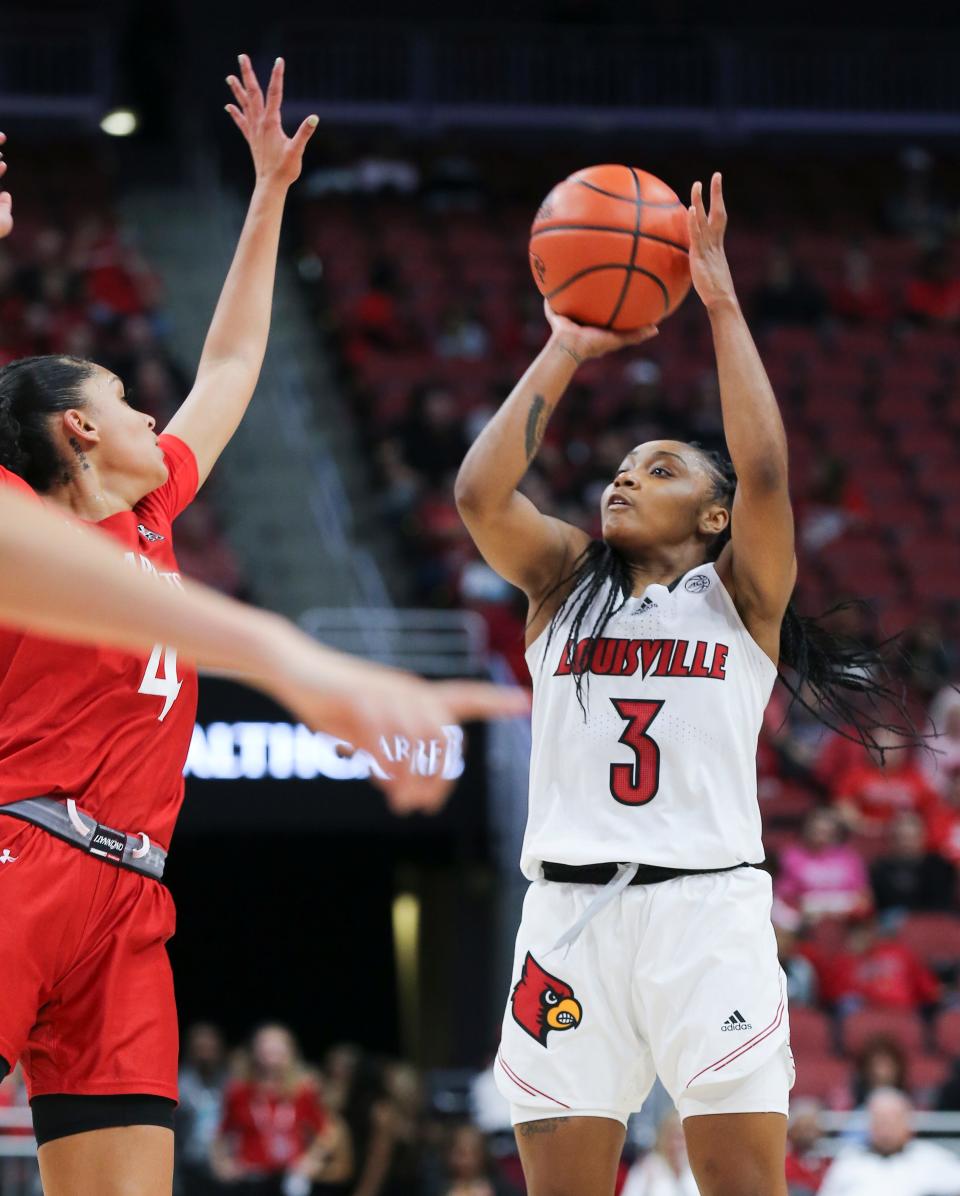What is the NCAA transfer portal? Explaining the process for athletes switching schools
Not so long ago, a college sport had two seasons to track.
The first was the competition season — practices, games, postseason tournaments. The second (and much longer) was the recruiting season, the pursuit of future core pieces.
These days, there’s a third: Transfer season.
Cards and the portal: Who the Cardinals are adding, losing to the portal
When a football or basketball season winds down, the transfer market heats up. And when it does, you’ll repeatedly hear the same phrase: A player has “entered the portal.”
But what exactly does that mean?
Here’s what you need to know:
What is the NCAA Transfer Portal?

It’s the current method for NCAA athletes to transfer between schools. Adopted in 2018, the portal was designed "to help compliance administrators track transfers to better organize the process,” an NCAA spokesman said via email.
The portal is a “notification-of-transfer” model, which an NCAA spokesman said was adopted to “empower student-athletes.”
Cats and the portal: See who the Wildcats are adding, losing to the portal
Under the transfer portal system, athletes only have to submit their name into the portal to be transfer eligible, a change from the previous process that required permission from a coach, athletics administrator or other party to transfer.
How does an athlete enter the transfer portal?
Despite some jokes you might have heard, there aren’t transfer-portal kiosks on campuses. There’s no magic door to step through. There isn’t even a website where an athlete who wants out can log on.
Instead, an NCAA spokesman said, an athlete who wants to enter the portal asks a university compliance administrator to submit their name. Once the request is made, the school has two business days to submit the information to the NCAA.
That’s done via a portal website to which compliance administrators have access. An administrator logs on and inputs the athlete’s request.
When is the NCAA Transfer Portal open, closed?

The NCAA and the Division I Council have tweaked the transfer portal window multiple times, and there are sport-specific periods during which athletes can enter the portal that change from year to year. This is the general schedule as of December 2022:
Fall sports: In the fall, a 45-day window beginning the day after championships selections are made in their sport; in the spring, May 1-15, except in football, when the spring window is April 15-30.
Winter sports: A 60-day window beginning the day after championships selections are made in their sport.
Spring sports: Dec. 1-15 in the fall, or a 45-day window beginning the day after championships selections are made in their sport in the spring.
In the 2022-23 school year, the football portal is open Dec. 5-Jan. 18 and April 15-30. The men’s and women’s basketball portals are open March 13-May 11.
How is transferring different via the portal?
Before the transfer portal, an athlete who wanted to transfer had to ask their head coach for permission to contact other schools. The coach had the option to deny that request, in which case the athlete could appeal to the school’s athletic director.
If the request was denied again, a second appeal could be made to a designated campus administrator, such as a dean of students. If the request again was rejected, the final appeal was to a committee of “professionals on campus and other students,” according to an email from an NCAA spokesman.
Potent in the portal: Jeff Walz at it again: How Louisville women's basketball used transfer portal to reload
Athletes who were rejected at every step of the process still could transfer, but they were not eligible to receive athletics aid at their new school.
Did the transfer portal make athletes immediately eligible?
No. Those are two different pieces of NCAA legislation.
In past years, athletes who transferred from one Division I school to another in many sports — including football and men’s and women’s basketball — were required to sit out a year before participating in competition.
There was an appeals process for immediate eligibility, but a redshirt year was the standard.
That was still the case when the portal went into effect in 2018-19.
KP and the portal: How Louisville basketball is setting up to 'crush' the transfer portal under Kenny Payne
It changed in April of 2021, when the NCAA adopted legislation that allowed a one-time transfer between Division I schools with no redshirt year.
Under the new rule, athletes are competition eligible immediately at a new school, an NCAA spokesman said via email, “provided they are academically eligible and making progress towards obtaining a degree.”
How many athletes are using the portal?
In 2021, there were 6,475 undergraduate transfers and 3,092 graduate transfers in all sports, according to NCAA tracking data.
Detailed information is available at the NCAA’s transfer database.
Reach Louisville men’s basketball reporter Brett Dawson at mdawson@gannett.com and follow him on Twitter at @BDawsonWrites.
This article originally appeared on Louisville Courier Journal: 2024 Transfer Portal: What to know about NCAA Transfer Portal rules
